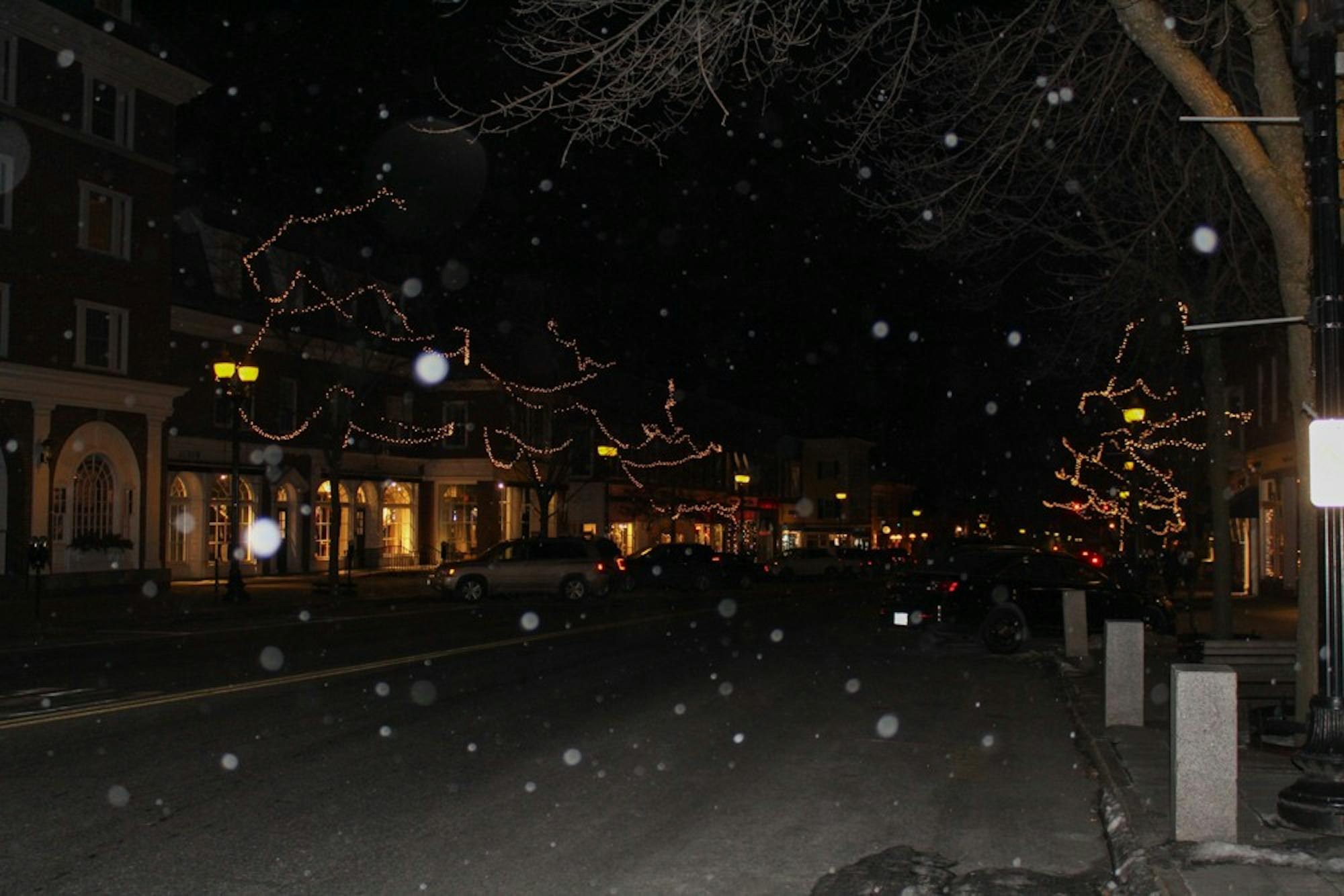Like many geographers, postdoctoral fellow Garrett Nelson sees the world in terms of maps.
Despite spending his undergraduate years at Harvard University studying social and environmental studies, Nelson became fascinated by geography his senior year after taking a landscape architecture course at the Harvard Graduate School of Design. In class, he parsed through papers and books by geographers who were conducting studies like those that he was trying to channel in his dissertation “Towards the New Ruralism,” which looked at rural areas in the Northeast to see how civic virtue was cultivated in the countryside as well as the role that rural imagination played in American history.
Nelson completed his Ph.D. on the conflicts of interest that arise with regional planning this past summer at the University of Wisconsin-Madison and used the same research to buttress his current project. He launched a crowd-sourced map in late November that prompts residents of the Upper Valley to outline the area based on their perceptions. He hopes that the venture will elucidate how individuals interact with their residence.
“Geographers are interested in what those functional areas are in relation to how people live their lives,” he said. “So by asking people where they think each region is and where it’s centered, it helps us understand how they themselves use the spaces they occupy.”
Nelson drew inspiration from geographers who led a similar study in Boston neighborhoods as well as his colleague who did the same analysis for metropolitan areas in the United Kingdom. A common thread was aggregating together people’s live opinions on where a roughly defined area is, he said.
The project is a geographic information system, using web mapping to store and join everyone’s written and geometric replies.
“Basically we draw a shape on a map and then we overlay all those shapes on top of each other through people’s responses,” he said. “The fact that you’re doing it on a computer makes it digital, but, in a way, it’s not that different than if I just asked people to cut out shapes from a paper map and pile them on top of each other.”
Nelson said that responses have been interesting and varied. For example, one response talked about how the inclusion of a new grocery store in Claremont made the respondent start to consider the town a part of the Upper Valley.
Others have written about their sense of place and how they feel part of a shared regional consciousness.
One of the 83 responses conveyed an idea of innate familiarity, discussing the boundaries as places they have biked, hiked, visited friends, had adventures and know landmarks and key features by heart.
Every drawn map, however, is centered on a four-town area: Hanover, Lebanon, Norwich, Harford. Nelson attributes this correlation to the crossroads of the two interstates, the concentration of institutions like Dartmouth and the Upper Valley Plaza and the Amtrak Train stations, a sentiment echoed by project participant Susan Boutwell.
“The center of the UV is Lebanon, Hanover, Norwich and Hartford … the work center of the region,” she said. “The boundaries also accommodate the school supervisory unions in Vermont … school administrative units in New Hampshire … [and] regional planning.”
But both Nelson and former editor of the Valley News and former New Hampshire commissioner of agriculture Steve Taylor agree that the term “Upper Valley” is a socially-constructed idea, as the term “Upper Valley” had its genesis when Valley News resolved to expand its circulation, Taylor said.
“If a lot of people thought the ‘Upper Valley’ was big, then that’s what it’ll be; if they thought it was small, then that’s what it’ll be,” Nelson said.
Taylor has a different opinion. He said that the “Upper Valley” is a done deal, that people have become comfortable with it and have moved forward, those arguing for an “Upper-Upper Valley” notwithstanding.
“‘Upper Valley’ used to be Hanover, Lebanon, White River Junction and a 10-mile radius,” Taylor stated. “Now it’s a 60-to-70-mile radius and 50 miles across.”
Nelson hopes that the website will show how it is important not to take geographic terms for granted, to understand how ordinary people see the spaces they live in and interpret for themselves the ways that boundaries are drawn, which could influence regional planning and transportation.
He also believes that a collective sense of belonging could also have partisan implications.
“The more you could get people to understand what they have in common and think of themselves as neighbors the more you can see political actions in common,” Nelson said.




